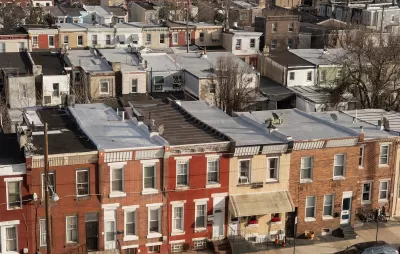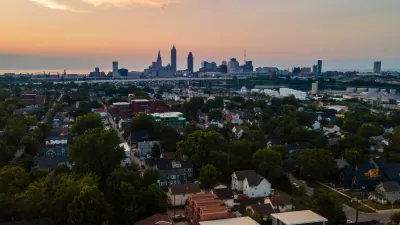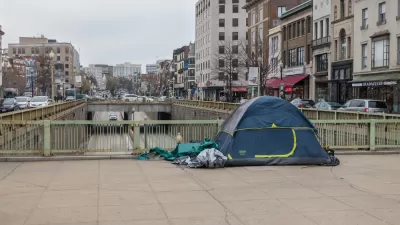A new study highlights the important role of emergency relief funding and eviction bans in stemming the rise of homelessness even as more families became housing-insecure.

Writing in Bloomberg CityLab, Kriston Capps outlines the concerns raised by a new analysis from the U.S. Department of Housing and Urban Development (HUD) that shows how eviction moratoriums and other emergency assistance programs launched during the pandemic helped prevent many Americans from falling into homelessness.
Officials describe this as an under-heralded success story of the pandemic emergency response. It’s also a warning about a still-urgent threat: In the wake of emergency relief efforts, homelessness is rising once again.
The study reveals that the number of households spending over 50 percent of their income on housing—the “worst-case housing needs”—hit a record 8.5 million household in 2021, yet sheltered homelessness decreased by 17 percent between 2019 and 2021. This is due to the “massive intervention” consisting of $47 billion in federal rental assistance and eviction moratoriums that kept many families with precarious housing situations in their homes.
Some key takeaways: “Pandemic interventions demonstrated that it’s possible to combat the routine use of evictions as a rent collection tool by combining legal aid with financial support.” Additionally, “Rapid rehousing, permanent supportive housing and other tools associated with the “housing first” model are the best options for dialing back homelessness, according to the analysis. And above all, homelessness is a housing problem, so building more rental housing at all levels of affordability is key to reducing the problems that lead to displacement.”
The study highlights an urgent warning: As pandemic relief programs end and housing instability remains a growing problem, “worst-case housing needs still represent an emergency.”
FULL STORY: Housing Instability Spiked During the Pandemic. Homelessness Didn’t.

Trump Administration Could Effectively End Housing Voucher Program
Federal officials are eyeing major cuts to the Section 8 program that helps millions of low-income households pay rent.

Planetizen Federal Action Tracker
A weekly monitor of how Trump’s orders and actions are impacting planners and planning in America.

Ken Jennings Launches Transit Web Series
The Jeopardy champ wants you to ride public transit.

Crime Continues to Drop on Philly, San Francisco Transit Systems
SEPTA and BART both saw significant declines in violent crime in the first quarter of 2025.

How South LA Green Spaces Power Community Health and Hope
Green spaces like South L.A. Wetlands Park are helping South Los Angeles residents promote healthy lifestyles, build community, and advocate for improvements that reflect local needs in historically underserved neighborhoods.

Sacramento Plans ‘Quick-Build’ Road Safety Projects
The city wants to accelerate small-scale safety improvements that use low-cost equipment to make an impact at dangerous intersections.
Urban Design for Planners 1: Software Tools
This six-course series explores essential urban design concepts using open source software and equips planners with the tools they need to participate fully in the urban design process.
Planning for Universal Design
Learn the tools for implementing Universal Design in planning regulations.
Heyer Gruel & Associates PA
Ada County Highway District
Institute for Housing and Urban Development Studies (IHS)
City of Grandview
Harvard GSD Executive Education
Toledo-Lucas County Plan Commissions
Salt Lake City
NYU Wagner Graduate School of Public Service





























